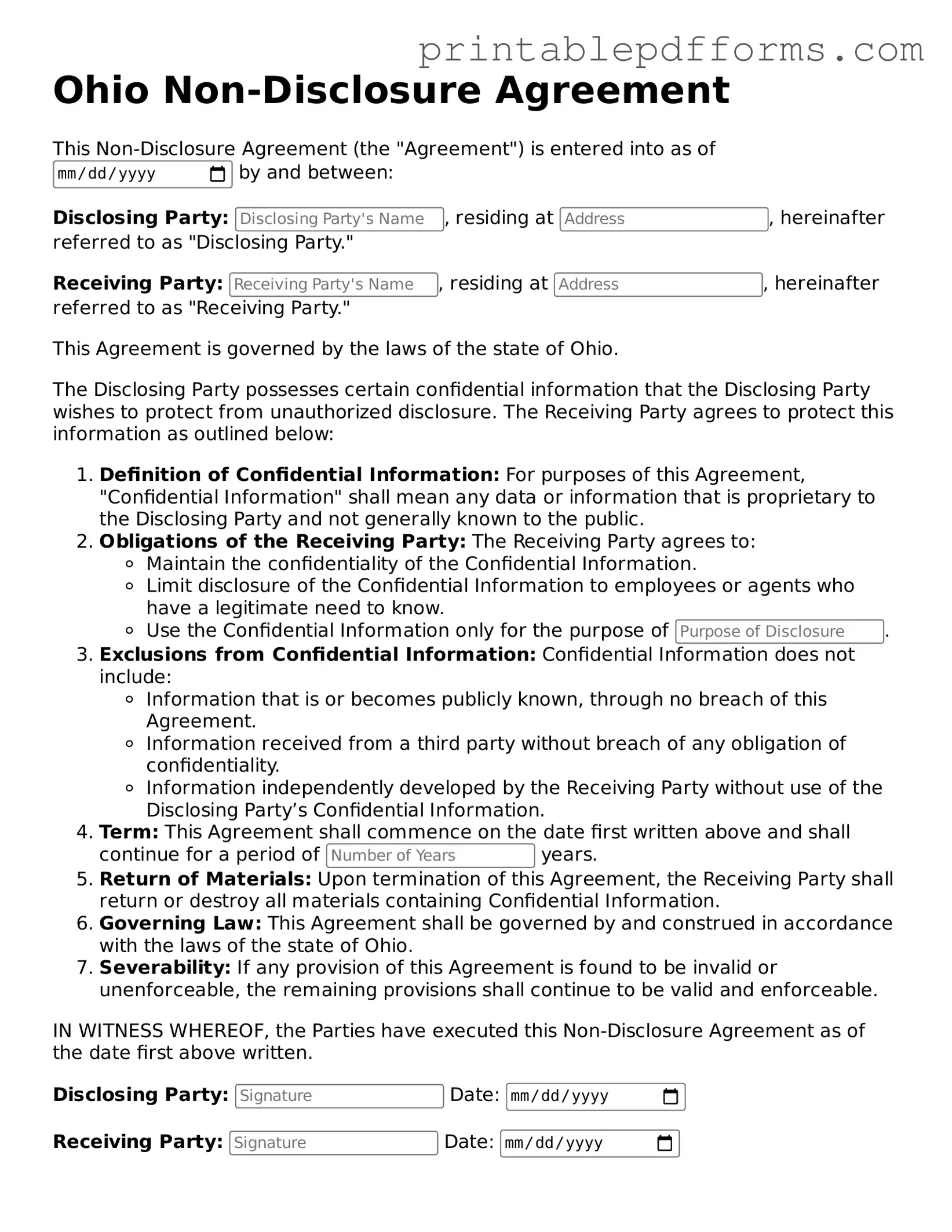What is a Non-disclosure Agreement (NDA)?
A Non-disclosure Agreement, often referred to as an NDA, is a legally binding contract that establishes a confidential relationship between parties. It protects sensitive information from being disclosed to third parties. This is particularly important in business settings where proprietary information or trade secrets are shared.
Why would I need an NDA in Ohio?
In Ohio, an NDA is crucial for protecting your intellectual property and sensitive business information. If you’re sharing proprietary data, client lists, or any confidential details with employees, partners, or vendors, an NDA ensures that this information remains confidential. It can help prevent competitors from gaining access to your trade secrets.
Who should sign an NDA?
Typically, anyone who will have access to confidential information should sign an NDA. This includes employees, contractors, business partners, and even potential investors. By having all relevant parties sign the agreement, you create a clear understanding of confidentiality obligations.
An NDA can protect various types of information, including:
-
Trade secrets
-
Business strategies
-
Client lists
-
Financial information
-
Product designs
Essentially, any information that you consider confidential can be included in the NDA, as long as it is clearly defined within the document.
How long does an NDA last in Ohio?
The duration of an NDA can vary based on the agreement between the parties. Some NDAs specify a fixed term, such as one to five years, while others may remain in effect indefinitely. It’s important to clearly outline the duration in the agreement to avoid any misunderstandings.
What happens if someone breaches the NDA?
If a party breaches the NDA, the injured party may seek legal remedies. This can include monetary damages, injunctions to prevent further disclosure, or even specific performance to enforce the terms of the agreement. The consequences will depend on the severity of the breach and the specific terms outlined in the NDA.
Can I create my own NDA, or should I use a template?
You can certainly create your own NDA, but using a template can save time and ensure that you include all necessary elements. Templates often come with standard clauses that cover important aspects of confidentiality. However, it’s wise to review any NDA with a legal professional to ensure it meets your specific needs.
Is an NDA enforceable in Ohio?
Yes, NDAs are generally enforceable in Ohio as long as they meet certain criteria. The agreement must be clear, specific, and reasonable in terms of scope and duration. Courts will typically uphold NDAs that are well-drafted and protect legitimate business interests.
Do I need to notarize an NDA in Ohio?
Notarization is not a requirement for an NDA to be enforceable in Ohio. However, having the agreement notarized can add an extra layer of authenticity and may be beneficial in case of a dispute. It’s always a good practice to keep signed copies for your records.
